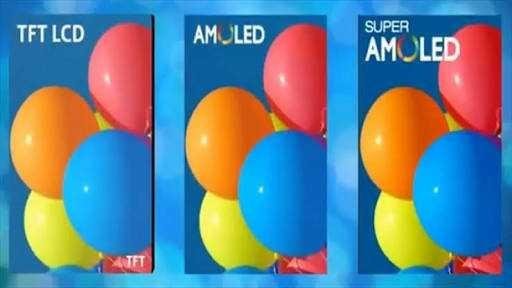Super AMOLED (S-AMOLED) and Super LCD (IPS-LCD) are two show writes utilized as a part of various types of hardware. The previous is a change on OLED while Super LCD is a propelled type of LCD.

Cell phones, tablets, PCs, cameras, smartwatches, and work area screens are only a couple of kinds of gadgets that utilization AMOLED as well as LCD innovation.
Everything considered, Super AMOLED is most likely the better decision over Super LCD, expecting you have a decision, however it's not exactly as basic as that in each circumstance.
Continue perusing for additional on how these show advancements contrast and how to choose which is best for you.
**What Is S-AMOLED? **
S-AMOLED, an abbreviated adaptation of Super AMOLED, remains for super dynamic framework natural light-emanating diode. It's a show write that utilizations natural materials to create light for every pixel.

One segment of Super AMOLED shows is that the layer that identifies touch is implanted specifically into the screen as opposed to existing as a completely isolate layer. This is the thing that makes S-AMOLED not quite the same as AMOLED.
You can read more about S-AMOLED in our What Does Super AMOLED Mean? piece.
**What Is IPS LCD? **
Super LCD is the same as IPS LCD, which remains for in-plane exchanging fluid precious stone show. It's the name given to a LCD screen that uses in-plane exchanging (IPS) boards. LCD screens utilize a backdrop illumination to create light for every one of the pixels, and every pixel shade can be killed to influence its brilliance.

Super LCD was made to take care of issues that accompany TFT LCD (thin-film transistor) showcases to help a more extensive survey edge and better shading.
**Read more about in-plane exchanging LCD in our What is IPS LCD?. **
Super AMOLED versus Super LCD: A Comparison
There isn't a simple answer as to which show is better when contrasting Super AMOLED and IPS LCD.
The two are comparable in some ways however extraordinary in others, and it frequently boils down to feeling in the matter of how one performs over the other in certifiable situations.
In any case, there are some genuine contrasts between them that determines how different parts of the show functions, which is a simple method to think about the equipment.
For instance, one brisk thought is that you ought to pick S-AMOLED on the off chance that you lean toward more profound blacks and brighter hues, on the grounds that those zones are what makes AMOLED screens emerge. Be that as it may, you may rather choose Super LCD on the off chance that you need more honed pictures and get a kick out of the chance to utilize your gadget outside.
**Picture and Color **
S-AMOLED shows are greatly improved at uncovering dull dark on the grounds that every pixel that should be dark can be genuine dark since the light can be stopped for every pixel. This isn't valid with Super LCD screens since the backdrop illumination is still on regardless of whether a portion of the pixels should be dark, and this can influence the obscurity of those zones of the screen.

What's more is that since blacks can be genuinely dark on Super AMOLED screens, alternate hues are substantially more energetic. At the point when the pixels can be killed totally to make dark, the complexity proportion experiences the rooftop with AMOLED shows since that proportion is the brightest whites the screen can create against its darkest blacks.
Notwithstanding, since LCD screens have backdrop illuminations, it here and there seems like the pixels are nearer together, creating a general more keen and more common impact. AMOLED screens, when contrasted with LCD, may investigate immersed or unreasonable, and the whites may show up marginally yellow.
When utilizing the screen outside in splendid light, Super LCD is in some cases said to be simpler to utilize yet S-AMOLED screens have less layers of glass thus reflect less light, so there isn't generally an obvious response to how they think about in coordinate light.
Another thought when contrasting the shading nature of a Super LCD screen with a Super AMOLED screen is that the AMOLED show gradually loses its energetic shading and immersion as the natural mixes separate, despite the fact that this as a rule takes quite a while and, after its all said and done won't not be observable.